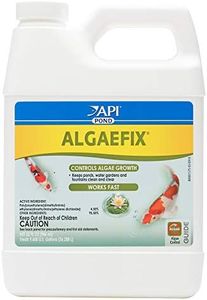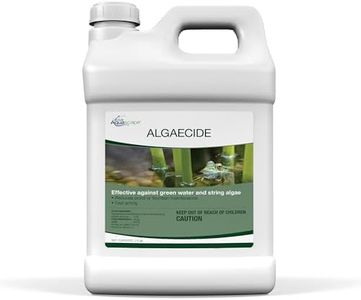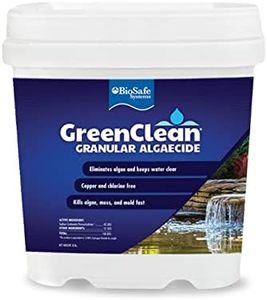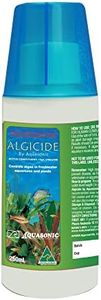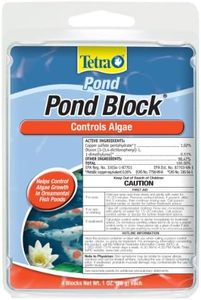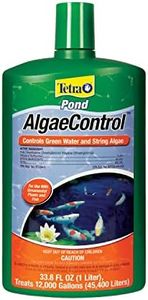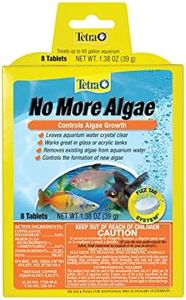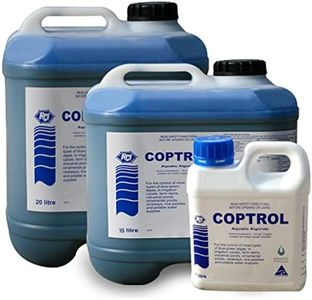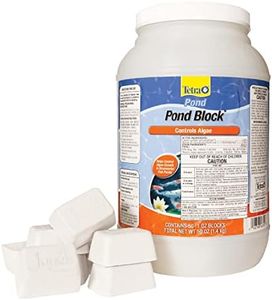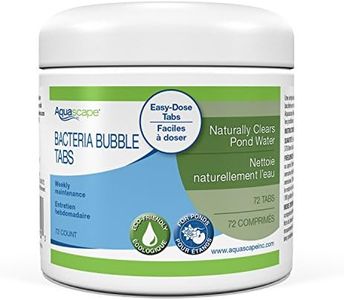We Use CookiesWe use cookies to enhance the security, performance,
functionality and for analytical and promotional activities. By continuing to browse this site you
are agreeing to our privacy policy
10 Best Pond Algaecides
From leading brands and best sellers available on the web.Buying Guide for the Best Pond Algaecides
Choosing the right algaecide for your pond is important to keep your water clear, your fish and plants healthy, and your overall pond ecosystem balanced. When selecting a pond algaecide, it’s crucial to understand the different types, how they work, and how they might impact the living creatures and plants in your pond. Always read labels carefully and consider your pond’s unique needs, such as its size, the presence of wildlife, and whether you use it for swimming or irrigation.Active IngredientThe active ingredient is the main chemical or substance that actually works to control or eliminate algae. Common active ingredients include copper-based compounds, hydrogen peroxide, and natural extracts like barley. This spec is important because it affects how quickly and safely the product works, and whether it's safe for fish, plants, and other aquatic life. Copper-based algaecides are powerful but can be harmful if overused, especially to some fish species. Oxygen-based or hydrogen peroxide options are generally safer for wildlife but may need multiple applications. If your pond has fish and plants, you might want to look for an algaecide labeled 'safe for all pond life.' If you're treating a decorative, fishless pond, stronger chemical options may be suitable.
Application MethodThis describes how you use or distribute the algaecide in your pond—such as liquid, granular, or tablet forms. The application method influences how evenly the product spreads and how easy it is to use. Liquid formulas are easy to mix and spread quickly but may require careful measurements. Granules or tablets can be placed directly on problem areas or distributed around the pond's edge. Choose the form that best matches your pond’s size and shape, and your willingness to measure or handle the product. For large ponds or targeted issues, granules and tablets give more control, while liquids are faster for widespread problems.
Speed of ActionThis spec refers to how quickly the algaecide takes effect after application. Some products work within hours or a day, visibly clearing green water or algae blooms, while others act more slowly over several days. Fast-acting formulas offer instant results but may require more caution regarding fish and plants, especially if oxygen levels drop. Slower-acting treatments are gentler on the pond's balance. If you need quick results for an event or severe algae problems, choose a faster option; if you're maintaining ongoing pond health, a slow, steady algaecide may be best.
Effect on Wildlife and PlantsThis spec tells you how safe the algaecide is for your pond’s fish, frogs, turtles, and aquatic plants. Some algaecides can harm sensitive fish like koi or affect delicate plants. Always check for claims like 'safe for fish and plants' or 'safe for pets.' Use this information as your primary guide if you have living creatures or plants, preferring products with a reputation for safety for all pond residents. If your pond contains only water and rocks, this spec may be less important to you.
Residual EffectsResidual effects describe how long the algaecide continues to prevent algae after application. Some products quickly break down and need regular reapplication. Others offer ongoing protection for weeks or months. Long-lasting options are useful if you want low-maintenance pond care, but they may also have a greater impact on the entire pond ecosystem. Choose a short-term treatment for fast fixes or regular maintenance if you frequently monitor your pond; select a longer-lasting formula if you prefer set-it-and-forget-it simplicity.
